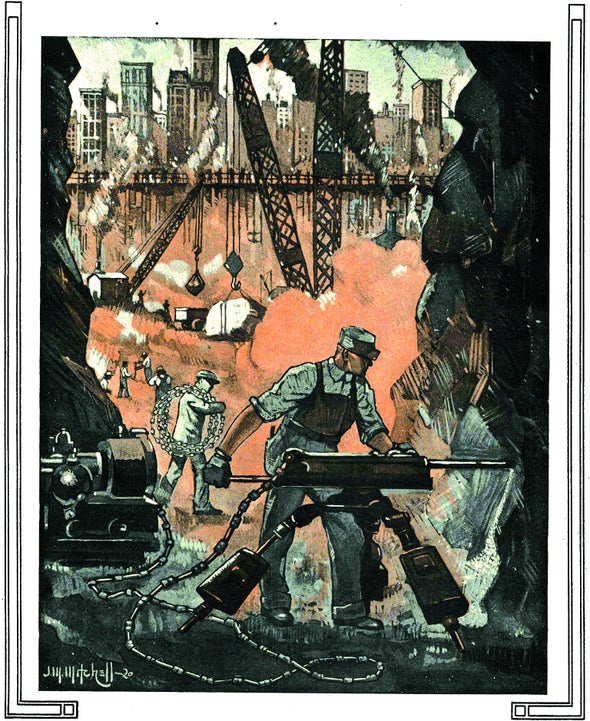1971
Computer Architect
“The computer ILLIAC IV, which is now nearing completion, is the fourth generation in a line of advanced machines that have been conceived and developed at the University of Illinois. ILLIAC I, a vacuum-tube machine completed in 1952, could perform 11,000 arithmetical operations per second. ILLIAC II, a transistor-and-diode computer completed in 1963, could perform 500,000 operations per second. ILLIAC III is a special-purpose computer designed for automatic scanning of large quantities of visual data. ILLIAC IV, employing the latest semiconductor technology, is actually a battery of 64 ‘slave’ computers, capable of executing between 100 million and 200 million instructions per second. Unlike its predecessors, which solve problems by a series of sequential steps, ILLIAC IV is designed to perform as many as 64 computations simultaneously. For such a computing structure to be utilized efficiently the problem must be amenable to parallel, rather than sequential, processing. —Daniel L. Slotnick”
1921
Rocket Science Wins
“The value of the multiple charge rocket for high altitude research is obvious when it is realized that, save for a projectile fired from a gun, which would produce forces too great to be withstood by a delicate apparatus, this method is the only one that does not require the presence of air. Next, as to the question of propulsion beyond the predominating gravitational influence of the earth, the one that has given rise to most discussion is, perhaps, ‘What is the value of such performance, even granted that it is physically possible?’ This question suggests others: ‘How are you ever going to recover anything that is sent off in this way?’ ‘How can any “volunteer” (of which there have been 18) return?’ And the speed of 604 miles per second, of which Mr. Morrell speaks as causing the rocket to ‘vanish in an incandescent wisp of flame and smoke’ would not be reached before an altitude of over 700 miles, at which height there must exist practically a complete vacuum.—R. H. Goddard”
Four Dimensions of Being
“From the winning essay for the Eugene Higgins Five Thousand Dollar Prize by ‘Zodiaque’ (Lyndon Bolton, London): ‘Lengths and times therefore have not the absolute character formerly attributed to them. As they present themselves to us they are relations between the object and the observer which change as their motion relative to him changes. Time can no longer be regarded as something independent of position and motion, and the question is what is the reality? The only possible answer is that objects must be regarded as existing in four dimensions, three of these being the ordinary ones of length, breadth and thickness, and the fourth, time.’
1871
Selling Wildlife
“The bird trade seems to be in a flourishing condition. Over 40,000 canaries are brought in every year, and probably 10,000 more are raised in this country. The number of bullfinches, goldfinches, thrushes, robins, and larks annually imported rise as high as 500 or 600 for each variety. There are fully 3,000 Java sparrows brought to the U.S. by vessels from that region, and fully as many parrots are yearly sold in this city alone. Waxbills and other minute varieties are scarce, and seldom arrive in quantities of more than 100 or 200 each year. Parroquets and love birds from Australia follow parrots in their relative importance.”
Lethal Cargo
“The steamship England, which cleared from Queenstown on January 12th, with 200 passengers on board, was obliged to put back to harbor in consequence of the breaking, during a heavy storm, of a number of barrels of bleaching powder in the hold. The heavy sea washed into the ship, and thus liberated chlorine gas in such quantities as to nearly suffocate all on board. Attempts were made to remove the powder, but it was found to be impossible for anyone to live in the hold long enough to put on the grappling hooks, and the captain decided to put back to port as fast as he could sail.”


